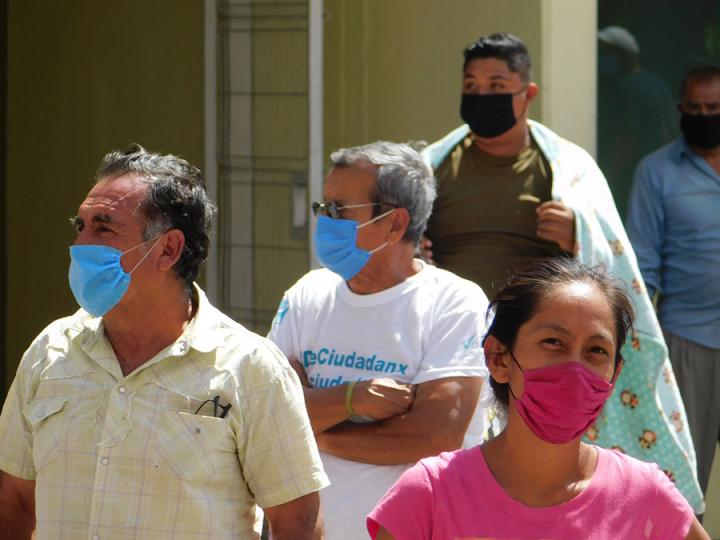Face coverings can cut risk of coronavirus spread
A range of face masks could all potentially help reduce Covid-19 transmission, a study shows.

Wearing a face mask or other covering over the mouth and nose reduces the forward distance travelled by an exhaled breath by more than 90 per cent, research suggests.
Scientists testing the effectiveness of seven types of face covering, including medical-grade and home-made masks, found that they could all potentially help limit the spread of the novel coronavirus.
However, some of the masks enabled strong jets of air to escape from the back and sides, researchers found.
The findings could aid policymakers producing guidance on the wearing of masks to help combat the virus, which can be spread in small droplets of water in people’s breath.
Range of face masks
The distance and direction travelled by air expelled when a person breathes or coughs when wearing different face coverings was measured by a team led by engineers at the University of Edinburgh, using a technique called Background Oriented Schlieren imaging.
Measurements were taken from people wearing different face coverings while standing or lying down, and from a manikin connected to a cough-simulating machine.
Researchers found that all face coverings without an outlet valve reduce the forward distance travelled by a deep breath out by at least 90 per cent.
A type of mask commonly worn by workers exposed to fine dust – called a respirator mask – was shown to provide protection to the wearer. However, the valves on these masks that made breathing easier could potentially allow infectious air to spread considerable distances in front, the study suggested.
Leakage
Surgical masks and the tested hand-made masks were found to limit the forward flow of a breath out, but also generate far-reaching leakage jets to the side, behind, above and below. Heavy breathing and coughing, in particular, were shown to generate intense backward jets.
Only masks that form a tight seal with the face were found to prevent the escape of virus-laden fluid particles, the team says.
Researchers found that full-face shields worn without masks enabled the release of a strong downward jet.
Exposure at hospitals
The team also discovered that a regular medical procedure known as extubation – the removal of a breathing tube used during anaesthesia and when patients are on a ventilator – may increase the risk of spreading Covid-19.
Simulations showed that the coughing that regularly accompanies extubation caused people nearby to be enveloped in the patients’ exhaled air. This puts clinicians and others at high risk of exposure to the virus.
The research, also involving researchers at the Roslin and Usher Institutes, Heriot-Watt University and NHS Lothian clinicians, is published as a preprint paper.
I have generally been impressed by the effectiveness of all the face coverings we tested. However, we discovered that some face coverings allow the emergence of downward or backward jets that people are not aware of and that could be a major hazard to others around them.
It was reassuring to see the hand-made mask worked just as well as the surgical mask to stop the wearer’s breath flowing directly forwards. This suggests that some hand-made masks can help to prevent the wearer from infecting the public. But the strong backward jets mean you need to think twice before turning your head if you cough while wearing a mask; and be careful if you stand behind or beside someone wearing a mask.
We know that the novel coronavirus is spread by the respiratory route, so visualising where someone’s breath or cough go is a reasonable proxy for inferring potential for virus transmission. The findings of this important study measuring the effectiveness of various professional and homemade face coverings show that masks generally reduce forward air flow, but coughing through a loose-fitting mask can lead to jets of air in unexpected directions. This means that masks are likely to help, but it’s important to maintain the two meter social distancing.
** The Roslin Institute receives strategic investment funding from the Biotechnology and Biological Sciences Research Council and it is part of the University of Edinburgh’s Royal (Dick) School of Veterinary Studies. **
Contact
Corin Campbell, Press and PR Office
0131 650 6382, corin.campbell@ed.ac.uk
Related links
Scottish funding supports Roslin Covid-19 work
Genetics of Covid-19 patients is focus of study


